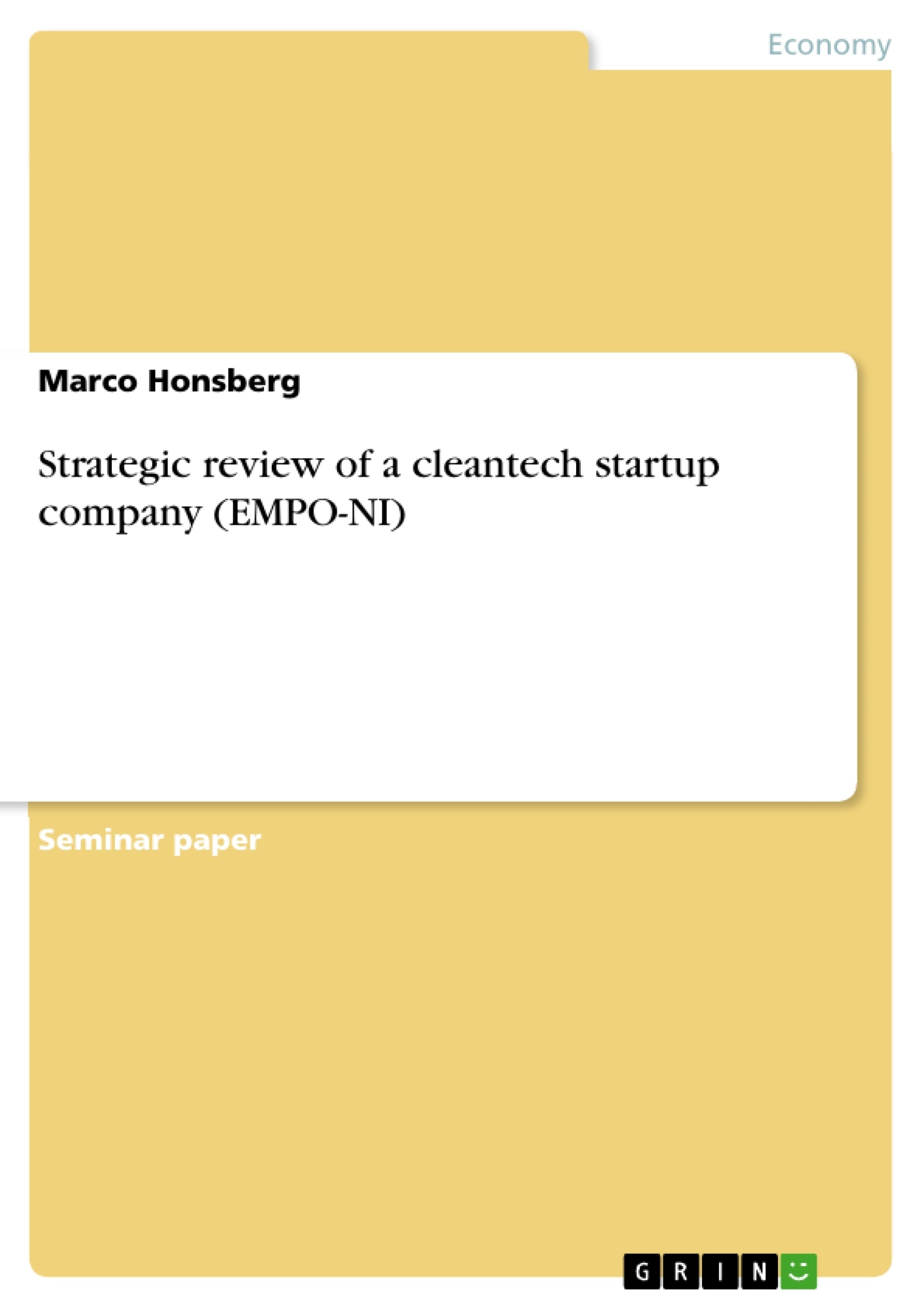The strategic review of EMPO-NI identifies EMPO-NI’s todays situation in the market place and provides in its last chapter recommendations for further actions and spots potential difficulties in the further development of this young company.
EMPO-NI started in 2006 to develop products in the field of regenerative off-grid power supplies, e.g. focussing on charging batteries out of solar energy. As reflected in the mission and vision statement the company, recognized as “highly innovative company” and sponsored by the Ministry of Research and Development in Germany, develops basic technologies for the next generation “Thin Film” solar panels and emerging applications like Electrical vehicles. The two new products and technologies to make inexpensive Thin Film solar panels applicable for off-grid markets and to develop a “Private E-bike” refuelling station that collects a day’s sun energy in a standard battery and transfers it during parking time of the E-Bike into the bike’s LiIon storage are the current highlights of EMPO-NI.
Inhaltsverzeichnis (Table of Contents)
- Executive Summary
- 1 Introduction of EMPO-NI
- 1.1 The sun is our mission
- 1.2 On and Off-grid market
- 2 Strategy
- 2.1 Vision
- 2.2 Mission
- 3 SWOT: External / internal analysis
- 3.1 Macro Environmental analysis (PESTE)
- 3.1.1 Political
- 3.1.2 Economical
- 3.1.3 Social
- 3.1.4 Technological
- 3.1.5 Environmental
- 3.2 Internal analysis
- 3.2.1 Strengths
- 3.2.2 Weaknesses
- 3.2.3 Blue ocean thinking
- 3.3 Strategic group analysis
- 3.4 Value chain analysis
- 3.5 The five forces that shape business strategy
- 3.1 Macro Environmental analysis (PESTE)
- 4 Growth strategy and method
- 4.1 Ansoff Growth Matrix
- 4.2 Method of growth realization
- 4.2.1 Battery charger for Thin Film Solar panels
- 4.2.2 System solutions for Electrical bicycles and Pedelecs
- 4.2.3 HRM
Zielsetzung und Themenschwerpunkte (Objectives and Key Themes)
This strategic review aims to analyze the current market position of EMPO-NI, a cleantech startup focusing on regenerative off-grid power supplies. The review will identify potential challenges and recommend strategies for future growth.
- Market analysis of the off-grid power supply sector
- Evaluation of EMPO-NI's competitive advantages
- Assessment of EMPO-NI's growth strategies
- Analysis of EMPO-NI's value chain and resource allocation
- Recommendations for strategic partnerships and market expansion
Zusammenfassung der Kapitel (Chapter Summaries)
Chapter 1: Introduction of EMPO-NI: Introduces EMPO-NI, its mission focused on solar energy solutions, and its operations within on and off-grid markets.
Chapter 2: Strategy: Outlines EMPO-NI's vision and mission statements, providing a foundation for its strategic direction.
Chapter 3: SWOT Analysis: Presents an external and internal analysis of EMPO-NI's environment and capabilities, including a macro-environmental (PESTE) analysis, internal strengths and weaknesses, strategic group analysis, value chain analysis, and an analysis of Porter's Five Forces.
Chapter 4: Growth Strategy and Method: Explores EMPO-NI's growth strategies, focusing on the development and diversification of products and markets, including specific product examples such as battery chargers for Thin Film solar panels and system solutions for electric bicycles.
Schlüsselwörter (Keywords)
Cleantech, off-grid power supplies, solar energy, Thin Film solar panels, electric bicycles, strategic analysis, SWOT analysis, value chain, growth strategy, market analysis, competitive advantage, strategic partnerships.
- Quote paper
- Dipl.- Ing. Marco Honsberg (Author), 2011, Strategic review of a cleantech startup company (EMPO-NI), Munich, GRIN Verlag, https://www.grin.com/document/182138



